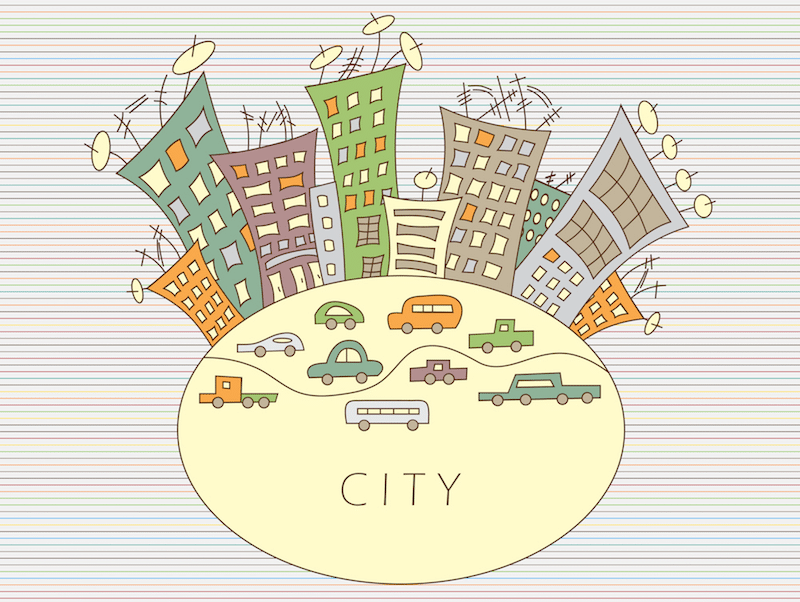How would we build our buildings today if we knew the technological developments of the future? While this might just be a wish for most in the smart building sector, London headquartered engineering firm Arup is taking the question very seriously.
“As engineers, we need to keep an eye on new advances in technology. Sometimes we encounter a new technology that may not be immediately suitable. This might be due to its readiness, its cost, or the client’s perception of risk. The ease of retrofitting a new technology is often a barrier to its adoption in existing buildings, but with some forethought, there can be simple and cost-effective ways to accommodate it”, said Martin Shouler, associate director, Arup.

The exponential nature of technological development makes it increasingly difficult to anticipate which current ideas may become reality and what unknown technologies may emerge. In the construction industry, where we design buildings with lifetimes that far exceed the speed of technological change, the potential benefits of knowing and planning for the future are even more beneficial. However, the difficulty and risk multiplies when you attempt to select the most likely future technologies and implement them into current building design.
“We need to consider low-cost ways to enable easy retrofitting of new technology that can be reasonably anticipated but may not be ready... By giving thought to future-proofing our buildings, we will make our cities more resilient”, suggested Shouler.
Arup has been applying this theory to the increasing demand for potable water in cities around the world. Take London as an example, by 2050 it is predicted that London will to need to find an additional 500 million litres of water each day, which will result in the unfortunate and inevitable rise in costs for the end user. Arup suggests reusing non-potable water such as rainwater and gray-water for purposes that do not require high-quality water; but long payback periods make these systems unattractive for now.
One of the biggest barriers to the adoption of water reuse systems in the future will be the complexity of retrofitting them to existing building stock. However, for buildings in design and construction phases currently, it would be possible to include infrastructure such as non-potable water pipe-work routing, while setting aside space for treatment and storage equipment at a much lower cost than we’d incur from retrofitting non-potable water systems at a later stage.
The scarcity of water has been a topic of discussion for many years now; it has even been attributed as the main reason behind several military conflicts and political negotiations. So it is no surprise that we have already begun to see this foresight in arid areas of the developed world such as in the city of Tucson, Arizona, where all new housing was effectively mandated to include provision for future gray-water re-use, and we see similar policies coming into action more recently in San Francisco, California.
Undoubtedly, as the price of water increases, stricter water use policies will become widespread; this is a future we already know. More efficient use of water, such as grey-water being used where potable water is unnecessary, is a development we can already anticipate even though the cost and scarcity is not yet at the stage where we are forced to make these changes. So it seems logical to act on this foresight by designing new buildings for this eventuality now.
The implications of this way of thinking are, of course, not limited to water. Consider the sensor rich and wireless environment we can already envisage for our buildings and cities. Could we prepare better for a wireless urban environment with sensors everywhere to avoid the cost and hassle of retrofitting buildings, homes and streets?
[contact-form-7 id="3204" title="memoori-newsletter"]
We know we are heading into a world with greater use of renewable, distributed energy generation, energy storage and energy efficiency, it has even been mandated in international policy such as COP21. When constructing and designing new buildings could we do better at planning for the potential development in on site power generation, or create space for battery storage, for example?
As we maintain and construct our emerging smart cities, should we not look into the future of what our communities are likely to require, and give more credence to the inevitable inter-connection of buildings to the Smart Grid, as explored in-depth in our latest report Smart Buildings Meet the Smart Grid
Some forward thinking does of course go into design and construction, but not enough of the “unknown” or “not yet” actually gets implemented at the extra cost to building owners it would need. “We need to consider low-cost ways to enable easy retrofitting of new technology that can be reasonably anticipated but may not be ready yet, allowing buildings to be ‘fitted for but not yet fitted with’”, says Arup’s Shouler.



